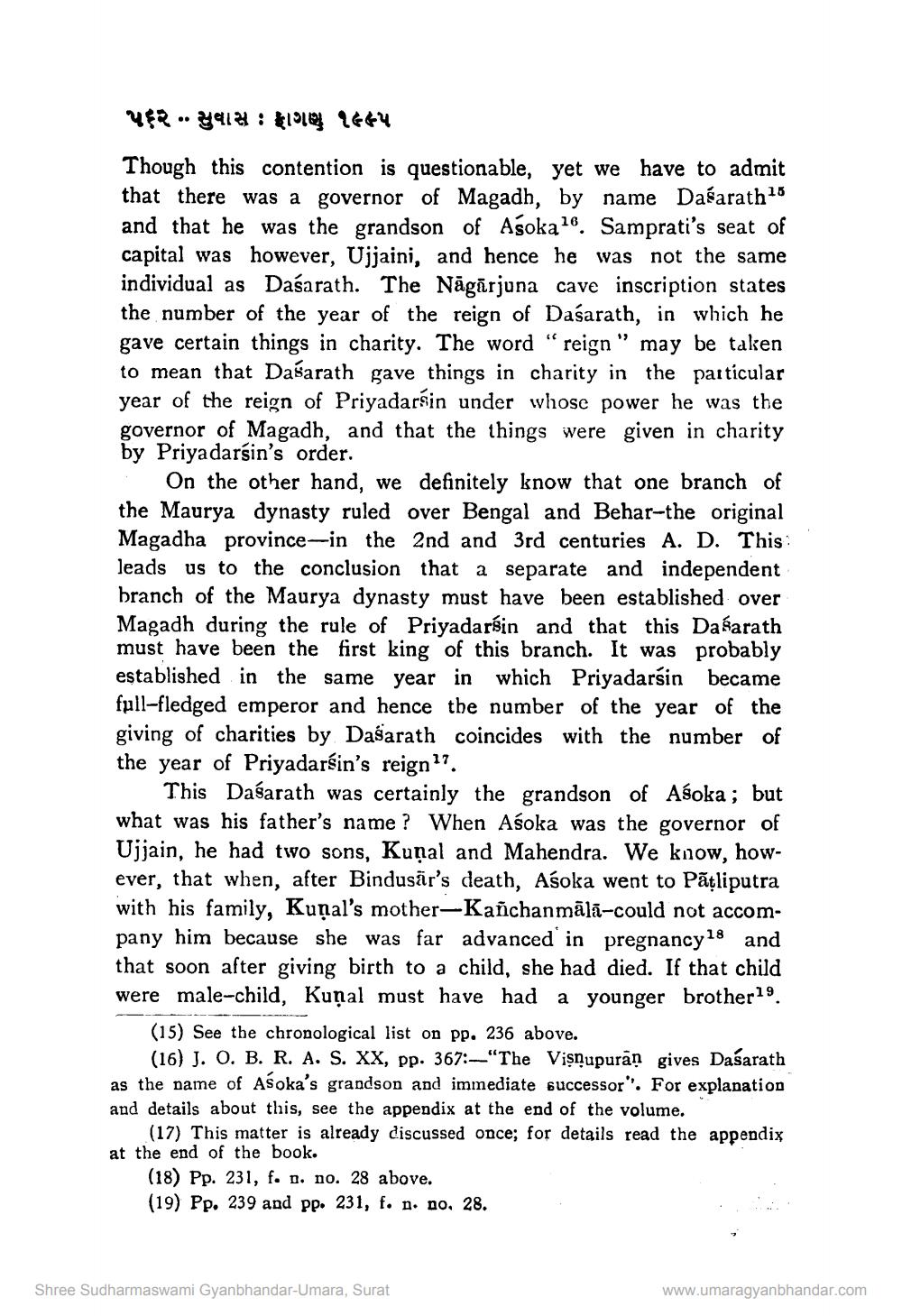________________
482 - 9912: lolly 1664
Though this contention is questionable, yet we have to admit that there was a governor of Magadh, by name Dasarath15 and that he was the grandson of Asoka26. Samprati's seat of capital was however, Ujjaini, and hence he was not the same individual as Dasarath. The Nāgārjuna cave inscription states the number of the year of the reign of Dasarath, in which he gave certain things in charity. The word "reign" may be taken to mean that Dasarath gave things in charity in the particular year of the reign of Priyadarsin under whose power he was the governor of Magadh, and that the things were given in charity by Priya darsin's order.
On the other hand, we definitely know that one branch of the Maurya dynasty ruled over Bengal and Behar-the original Magadha province--in the 2nd and 3rd centuries A. D. This leads us to the conclusion that a separate and independent branch of the Maurya dynasty must have been established over Magadh during the rule of Priyadarsin and that this Dasarath must have been the first king of this branch. It was probably established in the same year in which Priyadarsin became full-fledged emperor and hence the number of the year of the giving of charities by Dasarath coincides with the number of the year of Priyadarsin's reign??
This Dasarath was certainly the grandson of Asoka ; but what was his father's name? When Asoka was the governor of Ujjain, he had two sons, Kural and Mahendra. We know, however, that when, after Bindusār's death, Asoka went to Pāțliputra with his family, Kuñal's mother-Kañchanmālā-could not accompany him because she was far advanced in pregnancy18 and that soon after giving birth to a child, she had died. If that child were male-child, Kunal must have had a younger brother19.
(15) See the chronological list on pp. 236 above.
(16) J. O. B. R. A. S. XX, pp. 367:-"The Visnupuran gives Dasarath as the name of Asoka's grandson and immediate successor". For explanation and details about this, see the appendix at the end of the volume.
(17) This matter is already discussed once; for details read the appendix at the end of the book.
(18) Pp. 231, f. 8. no. 28 above. (19) Pp. 239 and pp. 231, f. n. no, 28.
Shree Sudharmaswami Gyanbhandar-Umara, Surat
www.umaragyanbhandar.com




